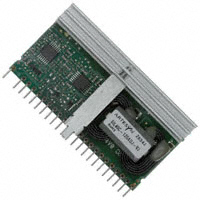Laser Cutter Power Supply
Proposal:
---------------------------------------------------------------------------------------------------------------------------------------------
Requirements:
The exact requirements of the power supply are
not known, since we don't have exact data on the diodes.
The fundamental requirement is that the PSU is
capable of 60A at approximately 2 volts.
Issues:
- Often diode supplys are
constant current, so a constant voltage supply may not be
optimal.
- Large conductors are required
for the currents involved.
- Most off the shelf
power supplies don't go this low and are expensive.
- Straight component level
approach may take some time to debug. (High
currents power supply design can be challenging.)
I propose
initially using 2 point of load modules in parallel, and if the
supply needs to be constant current, then adding a current
detector and error amplifier to the supply's feedback
loops. Point of load supplies are used to
generate high currents for CPU's and in dense (telecom) PCB's.
The circuit can probably be mounted next to the
laser module, limiting the length of the high current conductors.

The current sensor was selected because it looks
cool. It is also a one piece unit that provides
a voltage output proportional to current. Isolation,
insertion and signal conditioning are handled by the module.
It is hall-effect based.
Both of the above can be replaced with a component
level solution (to reduce cost) once the initial prototypes are
made.
The following are possible key components:
| Index |
Quantity |
Part
Number |
Description |
Customer
Reference |
Backorder
Quantity |
Unit
Price |
Extended
Price |
| 1 |
4 |
393-1190-ND |
CONV
DC/DC 12VIN 40A ADJOUT 200W |
|
0 |
30.84000 |
$123.36 |
| 2 |
2 |
620-1322-ND |
SENSOR
CURRENT 150A 5V BI 5-CB |
|
0 |
7.00000 |
$14.00 |
| 3 |
2 |
|
|
|
0 |
|
|
|
Subtotal |
$137.36 |
|
Shipping |
Estimate |
|
Sales
Tax |
unknown |
|
Total |
unknown |
The above is enough for two lasers
and can provide up to 5 volts at 80 amps. There will
be a few more small components that should be added to the order.
------------------------------------------------------------------------------------------------------------------------------------------------------------------
Component Level Notes:
A component level solution could be based around
something like a:
LTC3880 - Dual Output
PolyPhase Step-Down DC/DC Controller with Digital Power System
Management
I will need to look further to determine if the unit
can be modified to provide constant current. Because the
FETs are external, this approach can be the basis for some very high
current supplies. Additionally, the supply rail can be
higher, further reducing the cable sizes.
The unit comes in a QFN, which may be a challenge for
our assembly techniques.
A similar type of device may also be used that
might come in a larger package.
